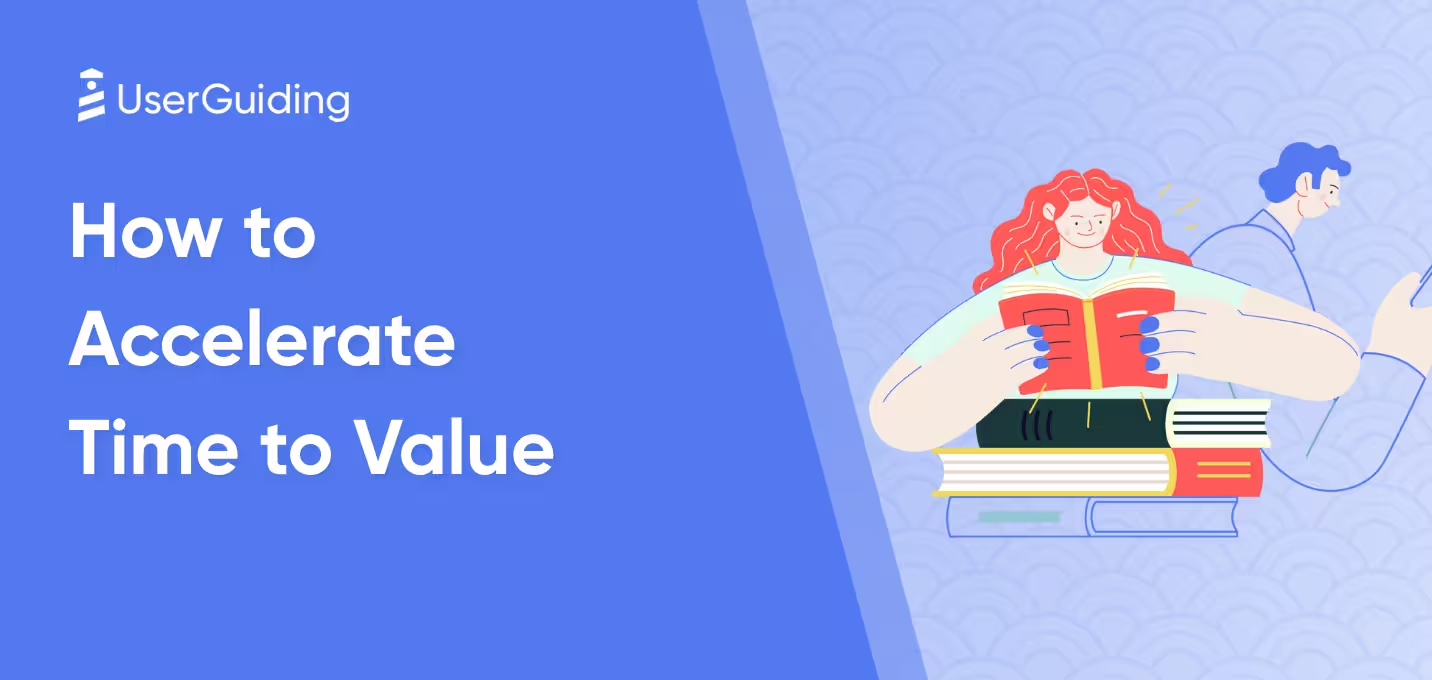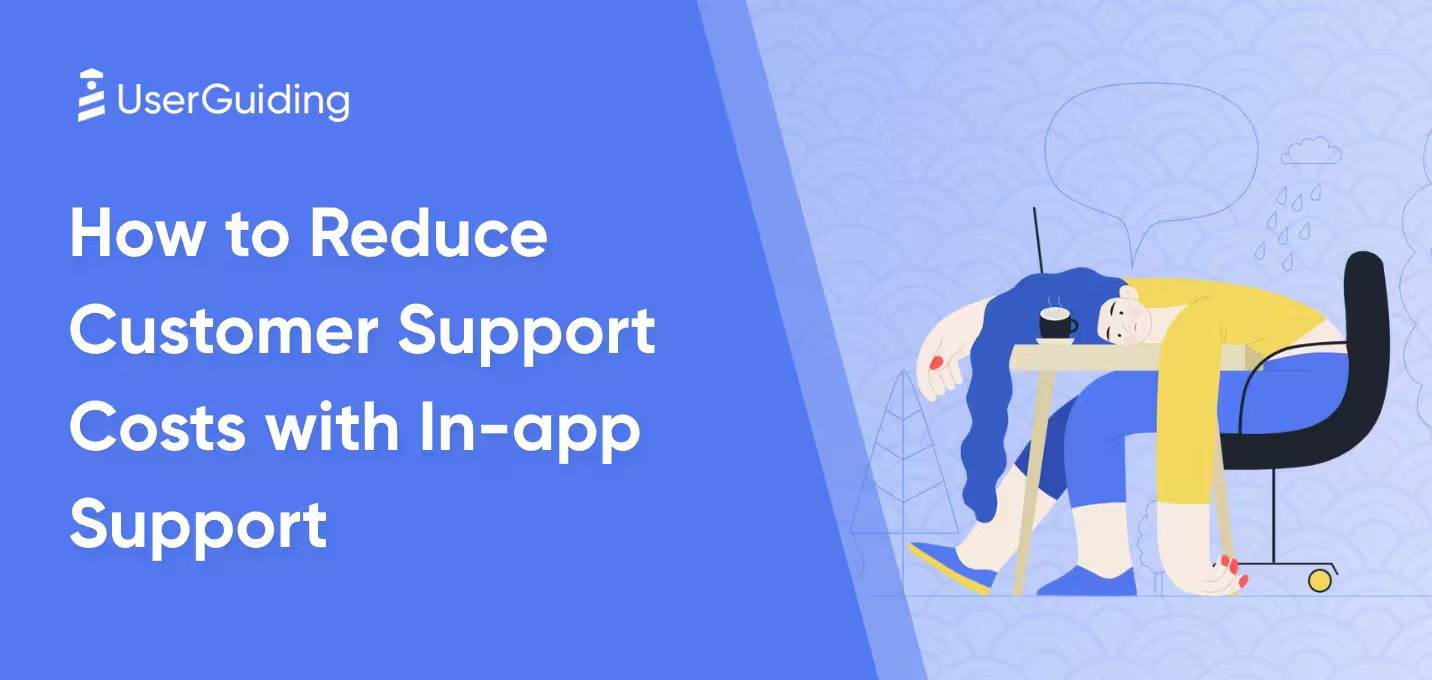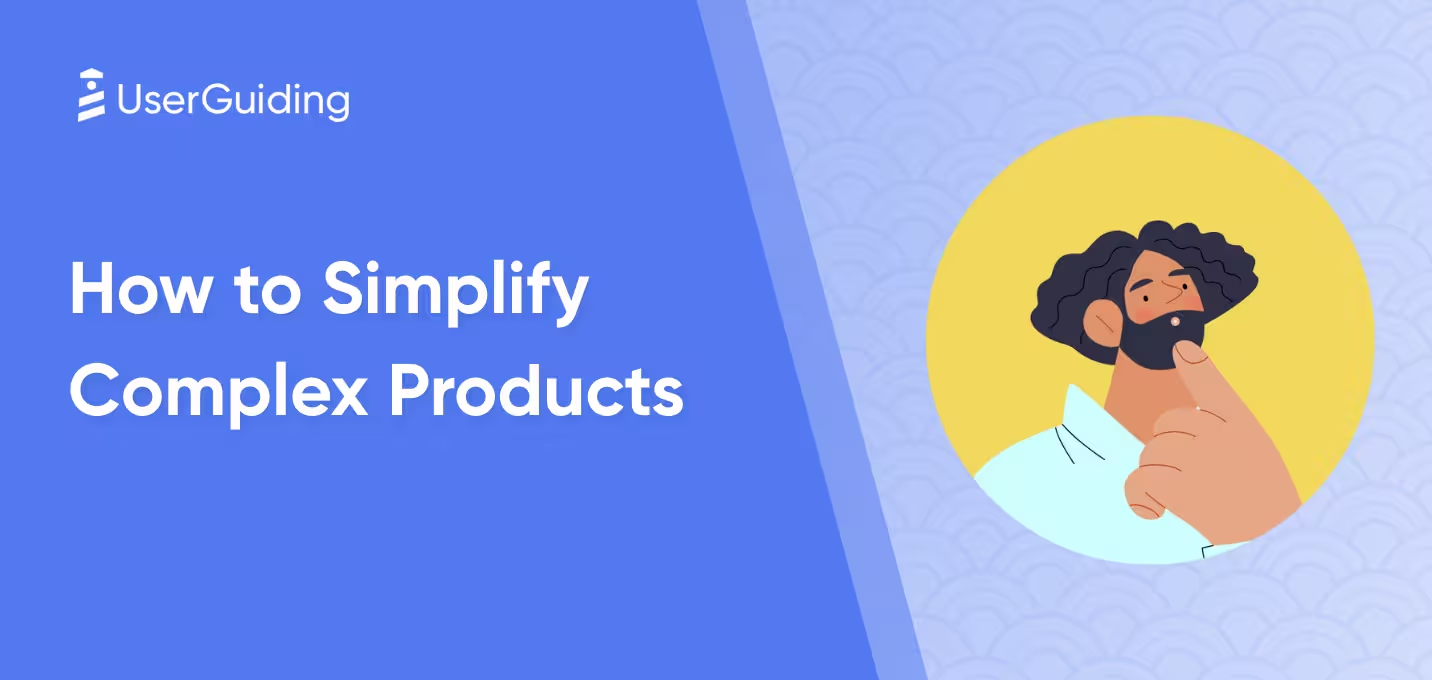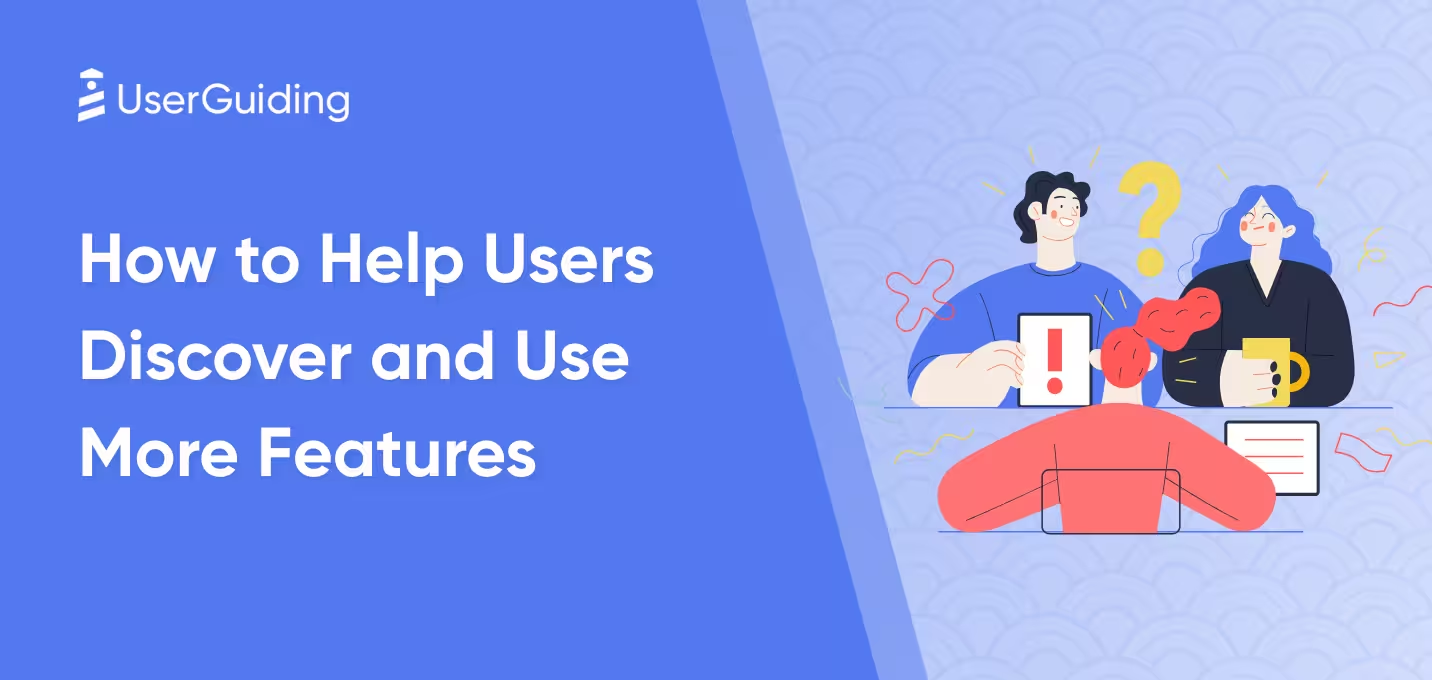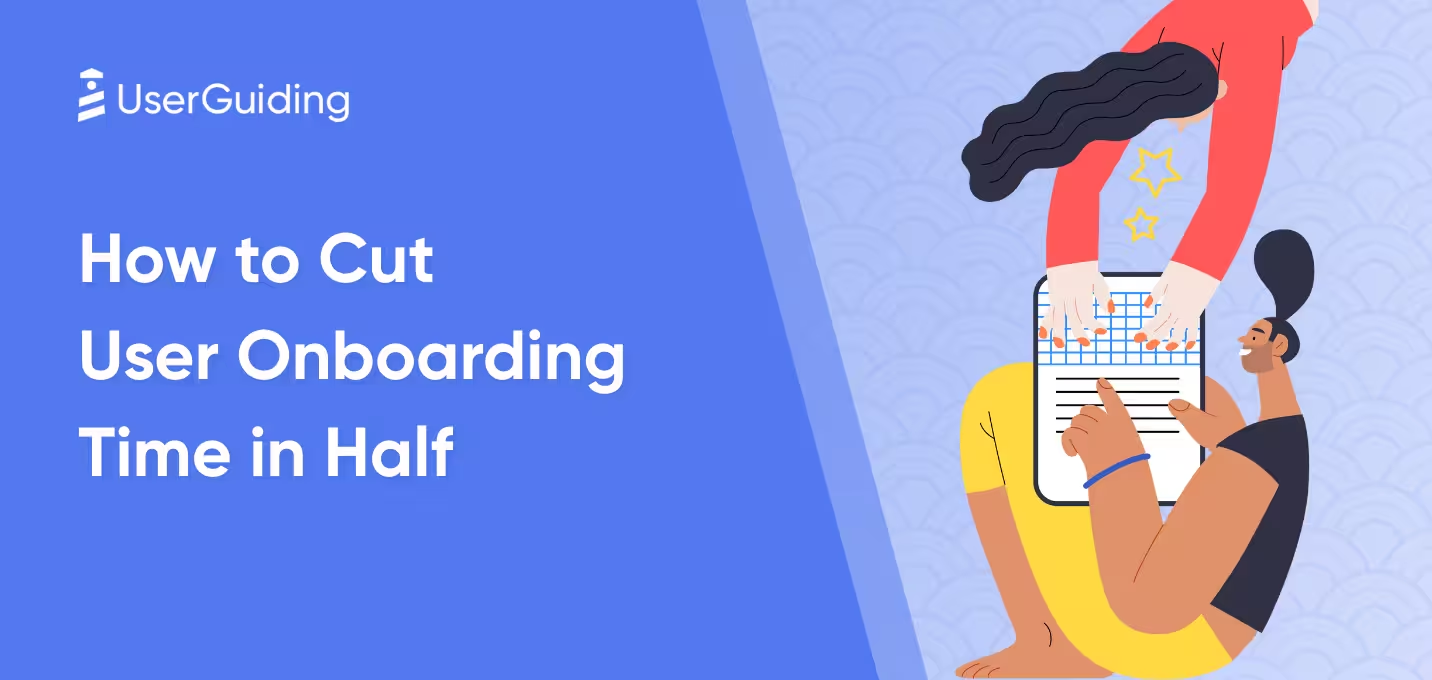

Have you ever signed up for a new product – only to quit because you didn't know how to use it?
Or have you ever spent months creating a new product – only to have users churn on you after a few hours because they didn't see the value?
In both cases, the problem is the same. Users refuse to engage with products whose value they don't understand.
So what's the solution?
Creating engaging product tours that hold users by the hand as they show them the features that matter to their individual use case.
How do you do that?
Well, I'm glad you asked 🙂
TL;DR
- Engaged users are on your platform regularly, use your solution to solve a problem of theirs and rave about you to their friends.
- A product tour is a short overview of a product's features and how they're useful to the user.
- Product tours can be personalized, interactive, contextual or guided. They can also fall under more than one of these types.
- Product tours increase user engagement by creating a good first impression, reducing friction to using features, boosting feature adoption and reducing Time to Value.
- To make your product tours more engaging, define your engagement goals, design the tour with the user in mind, avoid complexity, and use tons of visuals and interactive elements.
- UserGuiding will let you build a product tour without having to code.
Some Quick Definitions
First, some quick definitions, just to make sure we're on the same page here.
What is User Engagement?
User engagement is when a user engages with your product in a way that demonstrates that they're getting value out of it.
This could be as brief as using one core feature a few times, or it could be as long-lasting as someone who uses your product every day for five years.
Exactly what constitutes engagement varies from platform to platform.
On YouTube, users watch videos.
On Trello, users build and populate project management boards. But in general, engagement is characterized by:
- Repeated product usage: Typically every day, every weekday or every week. But you could also conceive of an engaged user using a niche product like tax software once a year.
- Chosen dependency: The user builds your product into their regular workflow and becomes dependent on it to solve a particular problem. If the user is a business, they might build technical dependencies by integrating your tool with other software in their stack.
- High user satisfaction: Engaged users will generally give you high NPS scores and refer lots of their friends to your platform.
Many products fail because they never manage to engage a sufficient number of users. More on how you can avoid that fate in a second.
What is a Product Tour?
A product tour is a short, interactive overview of a product's key features, usually delivered right at the beginning of the customer journey, directly after the user creates an account.

Classically, the business giving the product tour will:
- Segment new users based on sales data, sign-up flow data and data entered in the welcome screen
- Deliver a tour that highlights features that would be valuable to that user's particular segment
- List key actions in a checklist that historically have led to members of that user segment activating
- Walk the user through completing each checklist item, one by one, with as much guidance as needed
We hinted earlier that product tours are a great way to boost user engagement. But how exactly do they boost engagement?
7 Ways Product Tours Improve User Engagement
1. Positive first impression
You know what's really lame, as a user?
Being hyped to try a new product, signing up for the first time, and then being greeted by a ghost town where you have no idea what to do:

How much of a better impression you can make if you greet new users with a product tour that shows them exactly how to get value out of your product!
It's especially beneficial if you start your product tour with a welcome screen, like this:

Bonus points for a great first impression if:
- You greet the user by their first name
- You use a friendly, smiling photo on your welcome screen
- You don't bombard the user with too many questions
- You only highlight benefits of your product in your tour that are relevant to their use case
- Somewhat counter-intuitively: you allow the user to skip the product tour if they don't want it. Nothing says respect, like not forcing actions on a new user.
2. Improved user understanding
Ever played a video game that was really hard to learn at first?
The first time that you logged in, I bet you were really lost as to what to do. You had no idea what the controls were, or where to go, or who to talk to.
The video game equivalent of a product tour is a tutorial that explains the basics of the game to you.

With this renewed understanding, you can then take your game experience in any direction you like.
And SaaS product tours are just the same: they boost your users' understanding of how to get value from your product.
In the absence of that understanding, users are likely to simply churn, hit up Google, and go find a competitor.
3. Reduced friction
The modern world spoils us in some ways – we're used to a lot of our digital experiences feeling easy and smooth. Think: opening your favorite search engine to find information. Or going on Spotify and having ready-made playlists of music that will interest you.
So if your product is stressful or unintuitive to use, your users won't stick around for long.
If a user has to work out how to get value from your product on their own, that creates a level of friction. Imagine the user thinking:
- "What does this do?"
- "Where's the feature I signed up to this for?"
- "Where's the button to contact customer support?"
A product tour removes all this friction by immediately pointing the user to the features that will be valuable to them, and showing them how to use those features.

This both eliminates the frustration that friction causes and motivates them to keep using your product.
4. Increased feature adoption
Are you finding that your users are reluctant to adopt one or more of your key features?
This could be because you haven't done enough customer development interviews to sufficiently understand the customer pain points so that you can make a suitable solution.
But it could also be that your customers simply don't understand how to use the features, or where to find them in your product.
For the latter issue, a product tour is your friend.
Give customers a checklist that lists the key steps towards adopting primary features, and walk them through each step of that checklist with tooltips, modals and hotspots that provide clear instructions. So you make it much likelier that your customers will explore and eventually adopt those features.
Here's a great example of a product tour highlighting some features:

5. Increased user satisfaction and loyalty
Let's imagine two product experiences from your customer's perspective.
Company A has customers sign up and then expects them to work out how to use the product on their own.
They do offer a customer support chat, but customers have to actively seek that out. There's no onboarding material provided when customers first sign in – just an empty state.

Company B provides new customers with a product tour that:
- Make them feel welcomed
- Shows them exactly which feature to use and how to use them
- Is personalized to their use case
- Feels smooth, easy and intuitive
Which of the two companies do you think will have greater customer loyalty?
It's not hard to see that the answer is Company B. Actually, I'd be surprised if Company A's customers stick around for longer than a few minutes… 😣
6. Faster Time to Value
I recently started using an online finance platform.
I won't name names here, but the user experience was terrible. The platform frequently takes 30 - 60 seconds to load up, and all you're left with is a spinning wheel of death – with no sign of when it will end.

It's immensely frustrating, as a user. All I want to do is log in and check on my finances.
In the SaaS world, we refer to the amount of time it takes for a platform to show the user what they want as "Time to Value." The shorter it is, the better.
And a product tour is an excellent way to reduce Time to Value.
Why? Simply because a product tour shows you as a user exactly what you need to do in order to get value out of the product.
There's no sitting around watching the spinning wheels of death or looking at a blank UI, wondering what to do.
The product tour takes you by the hand and immediately shows you how to get the value you came for.
4 Approaches to Product Tours for Better Outcomes
Now that you know the impact product tours can have on user engagement, the question becomes: how should you approach building tours in your own business?
There are four main schools of thought here. And they're not mutually exclusive – in other words, you could conceive of a product tour that is personalized, interactive, guided and contextual, all at the same time!
Personalized product tours
A common mistake companies make when they're first getting started with product tours is to give users a generic product tour. This means that each user gets exactly the same tour, no matter who they are, where they come from or what they need your product for.
Sounds like harmless egalitarianism, but it's anything but.
Can you imagine what a CEO of a big company would think if you gave them the same product tour you gave their intern?
Or let's say you have a CRM – do you think that marketing and sales people use your platform in exactly the same way?
No: each user has their own use case, and so it's much more engaging when you personalize your product tour to speak to that exact use case.
A common practical solution to this problem is to segment new users using your welcome screen, and then deliver a personalized product tour thereafter on the basis of the segmentation data you collected.
For example:

Interactive product tours
A product tour is interactive when it involves the user directly in the process of the tour.
Two common examples of interactivity are:
- Step-by-step instructions where the user has to click on one step to move to the next one
- Checklists that the user has to fill out as they go through the key steps in the tour (pictured below)

An interactive tour can be contrasted against a passive product tour, in which users might just passively watch a product video, for example.
Interactive tours are more engaging than passive tours for one simple reason: they involve the user in the tour, and they get them to take action.
Contextual product tours
Contextual product tours are so called because they pop up in the exact context that the user needs them.
For example, imagine that you're trying a new feature of a product that you know well. You like the product, and are motivated to use the feature, but the feature itself is new and a bit unclear to you.
At that exact moment, a product tour pops up – often via a hotspot or a tooltip (pictured):

It walks you through how to use that particular feature.
And you, as the user, feel like the product was there to help you – in the exact moment that you needed the help.
So we can say that contextual product tours boost engagement because they are so relevant to the exact task that a user wants to get done in a given moment.
Guided product tours
A product tour is guided if it shows you the exact steps needed to use a feature or set of features.
For instance, imagine that you're walking users through the steps they need to activate.
A non-guided tour would simply say: the feature you need is over here, and perhaps highlight it.
Whereas a guided tour would say: here's the feature you need, here's how it connects with the other features you need, and here's how you use it in 3 simple steps, one by one.
As such, a guided tour is much more engaging for your users than a non-guided one. Guided tours are more specific, more detailed and, above all, more actionable.
Best Practices for Designing Engaging Product Tours
Set measurable goals
Before you can know whether or not your product tour is engaging, you first have to define exactly what would constitute a sufficient level of engagement for each tour.
Otherwise, you have nothing to aim at and no way to see if your product tour is a success.
For example, the typical goal of an initial product tour is user activation.
In other words, the user needs to engage with your tour long enough to go through the whole tour, checklist item by checklist item. Once they've finished the tour, they will have used the main feature(s) that their segment needs to learn in order to activate.
For product tours that relate to secondary features, the goal is normally feature adoption.
So by the end of the tour, the customer should have used the feature, got value from it, and want to adopt it.
In both instances, you can use UserGuiding to see to what extent individual users or user segments have completed the tours you give them.

Design in a user-centric way
A great way to see if your product tour is on track is by checking at what step of the tour your users drop off from the process.
This gives you information about which parts of the tour need to be further optimized to the needs of your users.
Another good tip is to survey existing users to see which of your features are intuitive to use, and which are a bit more confusing.
You don't have to send these surveys out by email – that seems too 2010 at this point in time. Rather, you can use something like UserGuiding to send a survey in-app:

Simplify complex information
Nobody likes a product tour that's long-winded and complicated to read.

Hardly an engaging user experience, is it?
Instead:
- Keep text to a minimum. Use short sentences. (See what I did there? 😉)
- Don't use any industry jargon unless you have to
- Use action verbs, like "click on this," "mouse over that," "type this here," or "choose a color."
Additionally, bear in mind that you don't have to give exhaustive information about every feature in your product tour. Your help center is the place for that.
A better approach is to give only as much information as is needed in order to help the user reach the goal you set in the first step of this process (ie activation or feature adoption).
Utilize visuals to bring your features to life
There's nothing less engaging than a product tour that's just wall after wall of text.
In the multimedia era in which we live, users have short attention spans, and they expect to be entertained and engaged. So only using text just isn't going to cut it.
Instead, you can:
- Add graphics to some of the steps in your product tour. UserGuiding includes many templates and stock images that you can use out of the box.
- Include video elements where features require a more detailed or personal explanation.
- Build beautiful imagery into your welcome screen
- Customize any visuals used so that they match the color and feel of your brand
Here's a great example of an onboarding video:
Leverage interactive elements to invite users to take action
Another good way to engage your users in your product tour is to make them part of the tour.
A classic example of an interactive element you can use is a checklist:
This encourages users to take action because:
- Checking off items on checklists is satisfying (yes, really!)
- We're psychologically more likely to want to complete tasks that we've already started, compared to ones that we haven't
- It's gratifying to get credit on the checklist for a task we've already completed
You also sometimes see hotspots and tooltips used as a way to bring interactivity to product tours. For example:
- Users can mouse over the little "i" symbol from a particular tooltip in order to bring up a tour of a particular feature.
- Users can hover over a hotspot to do the same thing.
Note, however, that these UI elements are more likely to be used for tours about secondary product features than they are for initial product tours.
Guide users to the next step
In the best product tours, users never feel stuck about what they should do next.
Rather, the next step is laid out for them by the product tour in a manner that matches the needs of that individual user.
For example:

Note how the user is required to click on the walkthrough steps, one by one.
This is much more engaging than sitting around feeling unsure of what to do next.
Summary
And that's a wrap!
Now that you've read this article, you should know:
- What user engagement is and why it matters
- How product tours can boost user engagement
- Which frameworks you can use for your product tours
- And which best practices you should follow to get the best engagement out of your product tours
If you've got value out of this article, trust us when we say that you'll get even more value from our tool, UserGuiding. You can use it to build product tours without having to code!
You can also track the performance of your product tours, see which parts of it users are engaging with, create in-surveys about your product features, and build both hotspots and tooltips.
If you'd like to try it out for free, the link you need is here.
Frequently Asked Questions
How do you increase user engagement?
Improving your onboarding will engage your users. So you should build product tours, create tooltips and hotspots that explain individual features, add gamification elements where appropriate, add an in-app help center, etc.
How can you design user engagement into your product?
View user engagement not as something that you code yourself, but something that you create without code on top of your product, as an additional layer.
What is the formula for user engagement?
The percentage of engaged users can be calculated as the number of engaged users, divided by the number of total users, multiplied by 100.

















.svg)
.svg)
.svg)
.svg)
.svg)

.svg)
.svg)












.svg)
.svg)




.png)


